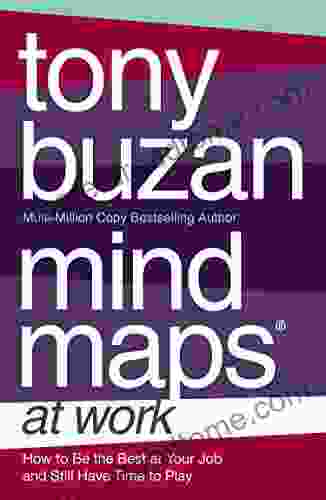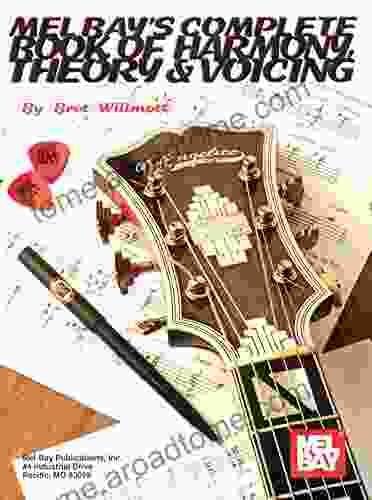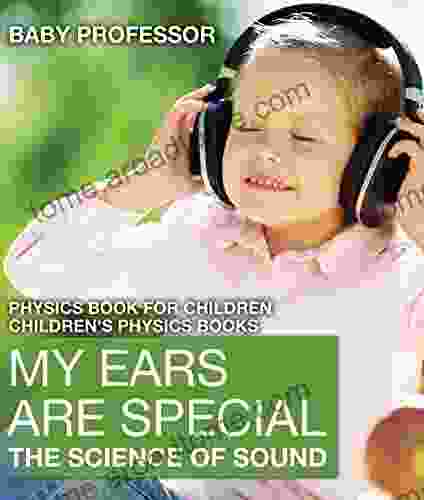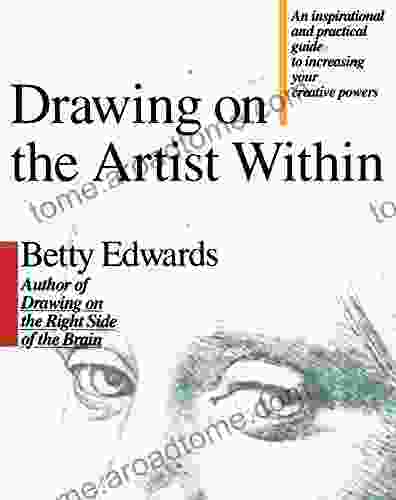Complete Guide to Harmony Theory and Voicing: A Comprehensive Resource for Musicians

Harmony theory is a fundamental aspect of music composition, enabling musicians to create pleasing and meaningful musical passages. It provides the framework for understanding the relationships between chords, scales, and melodies. Voicing, on the other hand, refers to the arrangement of notes within a chord, affecting its timbre and overall sound. Mastering both harmony theory and voicing is crucial for any musician seeking to create sophisticated and expressive musical compositions.
4.6 out of 5
| Language | : | English |
| File size | : | 140663 KB |
| Screen Reader | : | Supported |
| Print length | : | 248 pages |
Understanding Harmony Theory
Harmony theory revolves around the principles of chord construction, chord progressions, and voice leading. It teaches musicians how to identify, analyze, and create chords, as well as how to connect them in a logical and musical way. Through the study of harmony theory, musicians develop a comprehensive understanding of the building blocks of music and the techniques used to create cohesive and balanced compositions.
Chord Construction
Chords are fundamental units of harmony, consisting of three or more notes played simultaneously. Harmony theory provides a systematic approach to building chords, explaining the different types of chords (major, minor, augmented, diminished, etc.) and their respective note intervals. Musicians learn how to construct chords in various positions and inversions, expanding their compositional possibilities.
Chord Progressions
Chord progressions are sequences of chords that provide the harmonic foundation for musical compositions. Harmony theory explores the principles of chord progression, including common chord progressions, functional harmony, and modulation. Musicians learn how to create smooth and effective chord progressions that support the melody and enhance the overall musical expression.
Voice Leading
Voice leading refers to the smooth and logical movement of individual voices within a chord. Harmony theory provides guidelines for voice leading, ensuring that the voices move in a coherent and pleasing manner. By understanding voice leading, musicians can create clear and cohesive harmonies that avoid awkward voice crossings or clashes.
Mastering Voicing
Voicing is the art of arranging the notes within a chord to achieve a specific sonic effect. By manipulating the Free Download and spacing of the notes, musicians can create chords with different timbres, textures, and emotional impact. Voicing techniques include close voicing, open voicing, and spread voicing, each with its own unique characteristics.
Close Voicing
Close voicing refers to chords where the notes are arranged closely together, typically within an octave. This voicing technique creates a dense and rich sound, often used in slow and expressive passages. Close voicing is particularly effective for creating harmonic tension and depth.
Open Voicing
Open voicing involves spacing the notes of a chord further apart, often spanning more than an octave. This voicing technique creates a more transparent and airy sound, often used in faster and more upbeat passages. Open voicing allows for clearer melodic lines and provides more harmonic space for improvisation and ornamentation.
Spread Voicing
Spread voicing is a variation of open voicing where the notes of a chord are spread across a wider range of the keyboard. This voicing technique creates a spacious and shimmering sound, often used in arrangements for solo instruments or small ensembles. Spread voicing is particularly effective for creating a sense of atmosphere and ethereal ambiance.
Practical Applications
Harmony theory and voicing are essential tools for musicians in various fields, including:
Composition
Composers rely on harmony theory and voicing to create sophisticated and expressive musical compositions. They use harmony to establish the harmonic framework and convey emotional depth, while voicing techniques enhance the melodic and rhythmic qualities of their music.
Songwriting
Songwriters use harmony theory and voicing to create catchy and memorable chord progressions and melodies. By understanding the principles of harmony, songwriters can create songs that are both pleasing to the ear and emotionally resonant.
Arranging
Arrangers use harmony theory and voicing to adapt existing compositions for different instruments or ensembles. They manipulate chords and voicings to accommodate the specific characteristics of each instrument, creating balanced and effective arrangements.
Improvisation
Improvisers use harmony theory and voicing to create spontaneous and expressive musical solos. They draw upon their knowledge of harmony and voicing to navigate chord changes and create coherent and melodic improvisations.
The Complete Guide to Harmony Theory and Voicing
For those seeking a comprehensive and practical guide to harmony theory and voicing, "Complete Guide to Harmony Theory and Voicing" is an indispensable resource. Written by renowned music theorist and composer Dr. David Bennett, this book provides a systematic and thorough approach to these essential musical concepts.
Key Features
* In-depth coverage of harmony theory, including chord construction, chord progressions, and voice leading * Comprehensive exploration of voicing techniques, including close voicing, open voicing, and spread voicing * Practical examples and exercises to reinforce learning * Clear and concise explanations, suitable for both beginners and advanced musicians * Exclusive access to online resources, including interactive exercises and video demonstrations
Benefits
* Gain a comprehensive understanding of harmony theory and voicing * Develop the skills to create beautiful and sophisticated musical compositions * Enhance your songwriting, arranging, and improvisation abilities * Expand your musical knowledge and become a more versatile musician * Access a wealth of practical examples and exercises to accelerate your learning
Harmony theory and voicing are foundational elements of music composition, providing the tools to create meaningful and expressive musical works. By mastering these concepts, musicians can unlock their full creative potential and elevate their musical artistry. "Complete Guide to Harmony Theory and Voicing" is the ultimate resource for musicians seeking to gain a comprehensive understanding of these essential musical principles, empowering them to create captivating compositions that resonate with audiences.
4.6 out of 5
| Language | : | English |
| File size | : | 140663 KB |
| Screen Reader | : | Supported |
| Print length | : | 248 pages |
Do you want to contribute by writing guest posts on this blog?
Please contact us and send us a resume of previous articles that you have written.
 Book
Book Novel
Novel Page
Page Chapter
Chapter Text
Text Story
Story Genre
Genre Reader
Reader Library
Library Paperback
Paperback E-book
E-book Magazine
Magazine Newspaper
Newspaper Paragraph
Paragraph Sentence
Sentence Bookmark
Bookmark Shelf
Shelf Glossary
Glossary Bibliography
Bibliography Foreword
Foreword Preface
Preface Synopsis
Synopsis Annotation
Annotation Footnote
Footnote Manuscript
Manuscript Scroll
Scroll Codex
Codex Tome
Tome Bestseller
Bestseller Classics
Classics Library card
Library card Narrative
Narrative Biography
Biography Autobiography
Autobiography Memoir
Memoir Reference
Reference Encyclopedia
Encyclopedia Michael E Webber
Michael E Webber Ruth Coker Burks
Ruth Coker Burks Mukta Panda
Mukta Panda Dawn Burstall
Dawn Burstall David J Miklowitz
David J Miklowitz Penney Peirce
Penney Peirce Ben Evans
Ben Evans Sandor Nagyszalanczy
Sandor Nagyszalanczy Kevin Gise
Kevin Gise Basil Gold
Basil Gold Jimmy Carrane
Jimmy Carrane Pamela Traynor
Pamela Traynor Barbra Mann Wall
Barbra Mann Wall Bashar Katirji
Bashar Katirji Barton Press
Barton Press Betty Alvarez
Betty Alvarez Corinne Schmid
Corinne Schmid Jessica Flounder
Jessica Flounder Bernard Cornwell
Bernard Cornwell Bestsealer Publications
Bestsealer Publications
Light bulbAdvertise smarter! Our strategic ad space ensures maximum exposure. Reserve your spot today!
 Gerald ParkerFollow ·7.1k
Gerald ParkerFollow ·7.1k Jamal BlairFollow ·2.7k
Jamal BlairFollow ·2.7k Natsume SōsekiFollow ·13.8k
Natsume SōsekiFollow ·13.8k Cole PowellFollow ·16.8k
Cole PowellFollow ·16.8k Clarence MitchellFollow ·2.8k
Clarence MitchellFollow ·2.8k Braeden HayesFollow ·12.7k
Braeden HayesFollow ·12.7k Davion PowellFollow ·17k
Davion PowellFollow ·17k Rex HayesFollow ·19.6k
Rex HayesFollow ·19.6k

 Corey Hayes
Corey HayesEasy Delicious Recipes To Heal The Immune System And...
: The Cornerstone...

 Cody Russell
Cody RussellMastering Medical Terminology: A Comprehensive Guide for...
Navigating the...

 Ibrahim Blair
Ibrahim BlairBeat Cancer Symptoms: Your Essential Guide to Symptom...
Are you struggling with the debilitating...

 Finn Cox
Finn CoxHow to Be the Best at Work and Still Have Time to Play:...
Are you tired...
4.6 out of 5
| Language | : | English |
| File size | : | 140663 KB |
| Screen Reader | : | Supported |
| Print length | : | 248 pages |
















